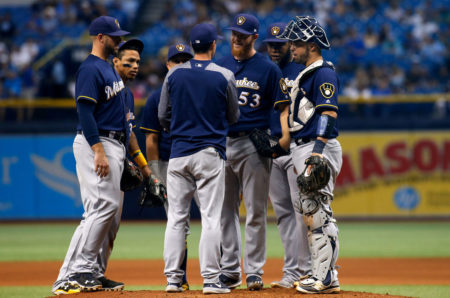State of Pitching (Part III): The Rise of the ‘Opener’
 Part III of a three-part series (see Part I, Part II)
Part III of a three-part series (see Part I, Part II)
What Are They Waiting For?
Strategic pitching decisions by managers can change the tenor of a game. Shut down the opposition before they get going. Give their team a chance to catch up. These decisions are all part of a winning strategy. And the teams that have been most successful the first 18 years of the 21st century have improvised. Found ways to sign more talent in the international player pool. Developed that talent. Plugged holes on their roster when they sprung a leak. Brought up weapons. Traded for weapons. Found players they could recreate as potent forces in a lineup or bullpen.
While the big-market teams come to mind immediately, so do the Tampa Bay Rays, Oakland Athletics, Kansas City Royals and Milwaukee Brewers. These teams have found low-cost ways to create competitive, winning rosters.
But no team has yet to create its own Ramiro Mendoza or Bob Stanley. The question is why? Are pitchers unwilling to throw more than 100 innings? Is it that difficult to ask a pitcher to pitch two or three innings twice a week? Is it a question of compensation? Injuries? Why wouldn’t teams choose to deploy their weapons more often? Get key outs when the game is on the line. What are they thinking?
And while “openers” are a creative response to a lack of pitching depth, these relievers are being slotted into new roles, not ready to pitch when the game’s on the line in the second inning and the opposition is about to score six runs, effectively winning the game at that point.
So, is it possible, even as MLB worries about the state of the game and its glacial pace (at times), that individual teams have begun to make changes to self-correct the less-than-effective conventions they have followed for years? There’s no question the 2018 season began to address some of the lingering issues about pitchers: How should they be used? What’s their value? How should a team put together a pitching staff to navigate the 1,458 innings in a baseball season? Is value pegged to strikeouts, innings pitched, or what?
Dave Cameron wondered, in his piece about relievers, if teams should continue to hold two roster places open for relievers being improperly used, rather than carry two more position players? His point is a good one. Sometimes managers burn through relievers one batter at a time without any rationale for the changes other than the players are in the bullpen and should be used. But are they necessary? Do they give the team a better chance to win? Or are they mop-up men brought in when the game is out of hand?
Perhaps next season will begin to answer some of these questions and connect some of the dots.
























